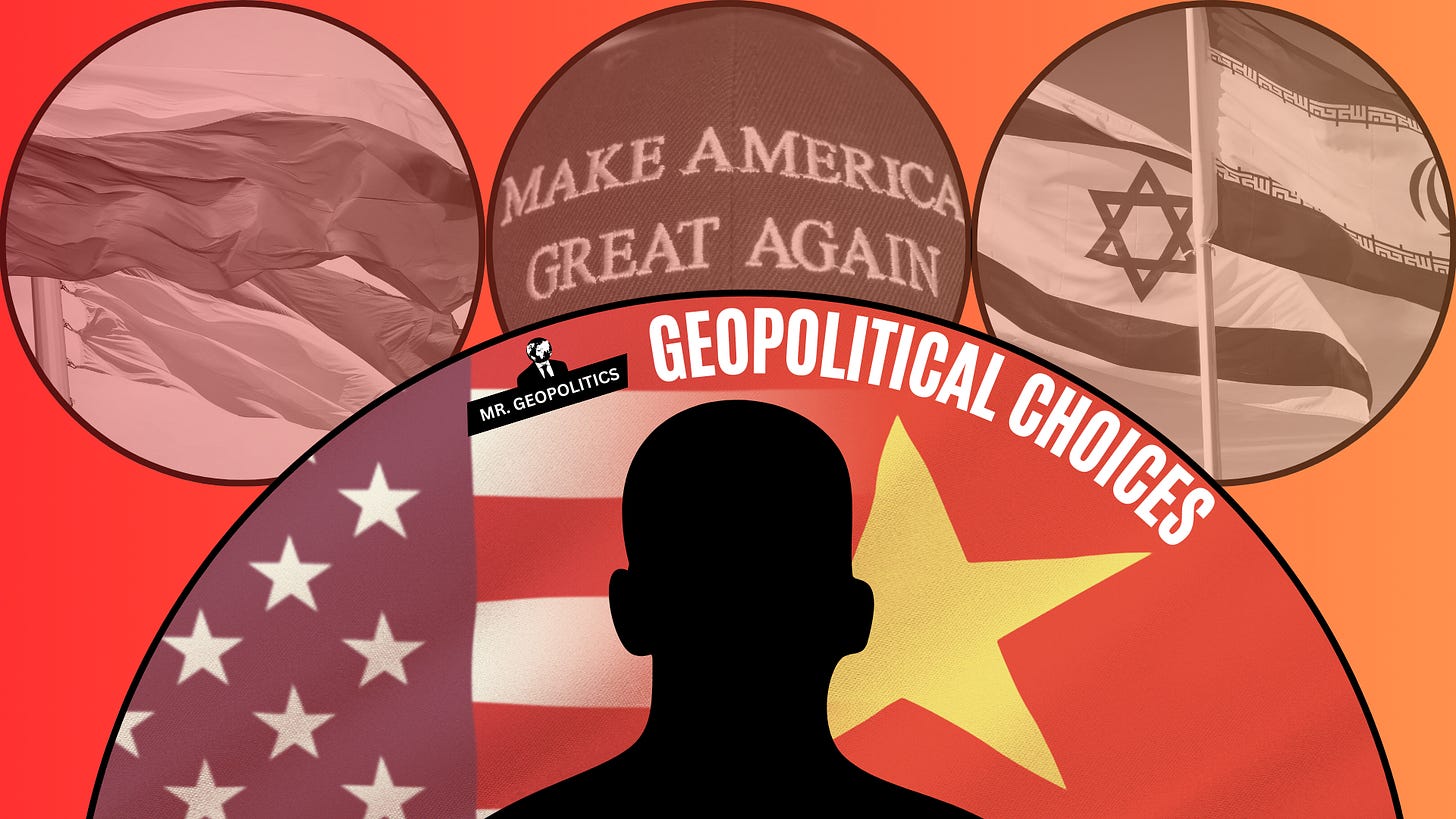Picking Sides Is So Yesterday. "Picking Geopolitics" Is The New Dilemma.
A new dimension that leaders need to quickly master
Over a decade ago, Chinese President Xi Jinping, visiting Kazakhstan, unveiled the “Belt and Road Initiative” (BRI), the multi-trillion dollar Chinese plan to redesign global trade. Countries across the globe faced a new dilemma.
For the first time in decades, governments had spun around the US. Whether by choice or circumstance, the US was everybody's North Star. Now, however, Beijing was offering a different path. Instead of spinning around the US, governments could spin around China. As most nations signed onto China’s BRI (over 150 countries have some kind of involvement), they were indirectly picking sides, holding America’s hand while seducing China.
As geopolitical activity ticks up, this has been one of the biggest headaches. How does a government or business manage the relationship between the US and China? And, as the space for neutrality shrinks due to new projects like de-risking, how does someone pick a side—and what side should it be?
Picking sides is its own bag of worms and crisis.
But now, it is being joined by a new headache and dilemma that is far more significant and consequential in the short term: the pressure is growing for global stakeholders to start picking geopolitics.
Keep reading with a 7-day free trial
Subscribe to Mr. Geopolitics to keep reading this post and get 7 days of free access to the full post archives.





